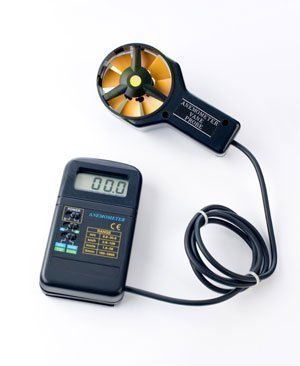What is an Anemometer?
Anemometers are meteorological devices that measure wind velocity and pressure. They are normally found in weather stations, but are also used on ships, oil rigs, at airports, and for personal purposes. The devices derive their name from the Greek word “anemos,” which means wind. There are currently two anemometer categories: pressure and velocity.
Velocity Anemometers
There are currently two types of velocity anemometers, one that uses a wind vane to operate and one that does not. Of these two, the cup anemometer is more popular and consists of four cups that form a cross if they are viewed from above. The cups capture the wind and cause the anemometer to turn or spin. The axis is affixed to a mechanism that records the number of revolutions, which are converted to wind velocity. The cup type is cheap and does not require a weather vane, but it is not as accurate as other velocity anemometers. The windmill anemometer is based on a wind vane that shows wind direction. It has a tail fin that measures wind direction and a propeller on the front end that records wind velocity via recording the number of revolutions per minute.
Pressure Anemometers
There are two pressure anemometer types, tube and plate. Plate anemometers are made of a circular or square flat plate with a spring behind it. It uses a wind vane to direct the plate against the wind. The plate’s force on the spring measures the wind’s pressure. Plate anemometers are not suitable for recording fluctuations in wind pressure and measure the average wind pressure instead. Tube anemometers are more complex than plate anemometers. A vessel with an opening at its top measures and records wind pressure. The pressure that comes through the opening changes the device’s internal pressure, which permits the wind pressure to be calculated. Tube anemometers can be used for a long period of time before maintenance is required.
Modern Anemometer Technologies
Ultrasonic and laser Doppler anemometers are the most current and accurate wind measuring devices. The laser Doppler measures wind speed by detecting how much light is reflected from transmitted laser beams off of moving air particles. The ultrasonic measures wind speed by transmitting sound waves and determining how the wind impacts their speed. Ultrasonic anemometers measure wind direction and speed and are used on airplanes, ships, wind turbines, and weather stations.


Comments - No Responses to “What is an Anemometer?”
Sorry but comments are closed at this time.